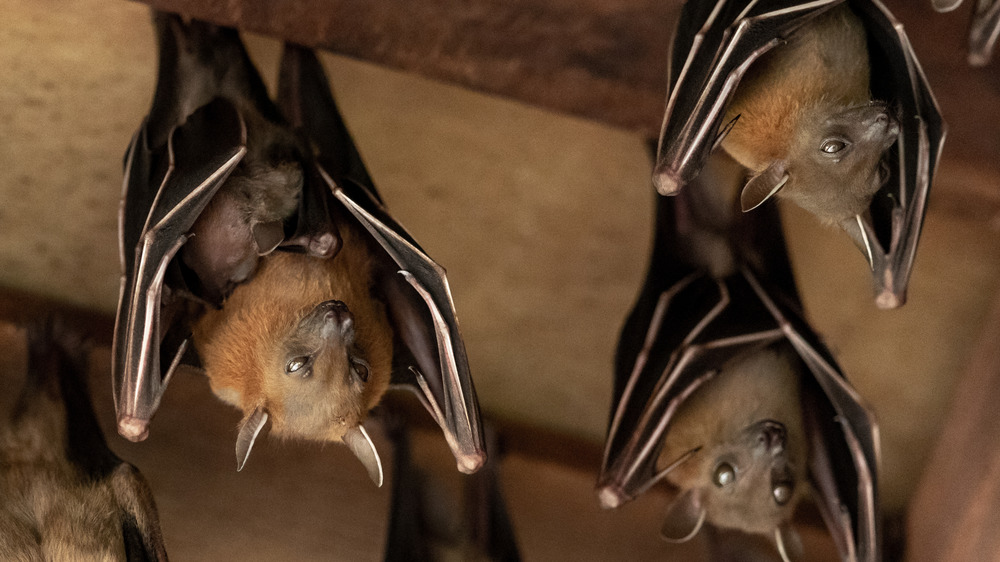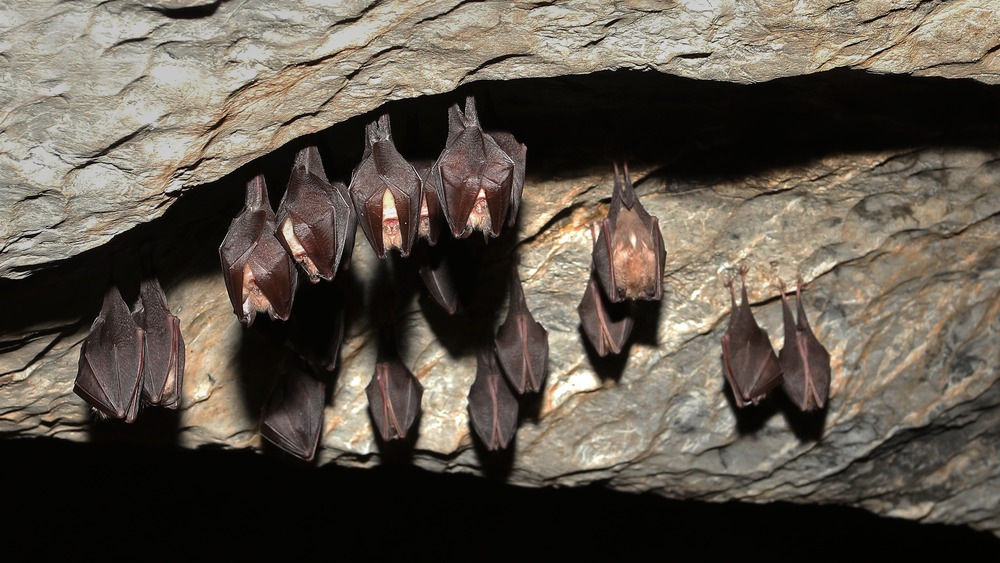Why Do Bats Hang Upside Down?
Due to their association with the coronavirus, bats have gotten a bit of a bad rap recently. That's unfortunate, because they're actually pretty fascinating creatures. They're the only mammals that can fly, per WorldAtlas. They're nocturnal. And they do that cool thing where they hang upside down to sleep. As for that last one: Why do they do that, exactly?
To a human, the idea of hanging upside down for an extended period of time sounds uncomfortable. If you've ever tried it before — on a playground, for example — you probably remember feeling dizzy from all the blood rushing to your head. It's different for bats, though. According to Terminix, bats' small bodies are compact enough that their hearts can easily circulate blood everywhere, even when they're upside-down.
You might also wonder how bats have the strength to cling to the ceiling for hours. How can they maintain their grip even while asleep? Per Wonderopolis, bats have a special adaptation that makes clinging to things easy. While humans have to expend energy to grab onto something like a baseball, bats' talons actually clench closed when they relax. Their talons are attached to tendons which are in turn connected to their upper bodies. When bats sleep upside down, the weight of their bodies pulls down on the tendons, locking their talons closed.
Now we better understand how bats can hang upside down. But still ... why do they do it?
By hanging upside down, bats can easily fall into flight
There are two main reasons that bats have evolved to sleep hanging upside down. The first is it keeps them out of the reach of predators. While birds are able to escape from ground-based predators in high-up nests, bats can access even more secluded areas through their unique ability to hang upside down. Finding a safe place to sleep is particularly important for nocturnal animals like bats; sleeping during the day is risky, as many predators spend that time hunting. According to Batworlds, bats' main predators include owls, hawks, snakes, and raccoons. Hanging upside down from trees can help bats ward off some of these species; sleeping in secluded caves and rock crevices offers even more protection.
Second, hanging upside down allows bats to take flight on a moment's notice. According to Mental Floss, since bats are mammals, they have thicker bones and heavier bodies than most birds. As a result, taking flight is a bit of a challenge for bats. Per How Stuff Works, bats' wings are unable to lift their bodies into flight from a stand-still, and bats' legs are too small to give them a sufficient running start. Instead, evolution has determined that the best way for a bat to start flying is to fall. By hanging upside down, bats can instantly drop down and start flapping away whenever they need to. Once in the air, Mental Floss reports, bats can fly circles around other creatures.

